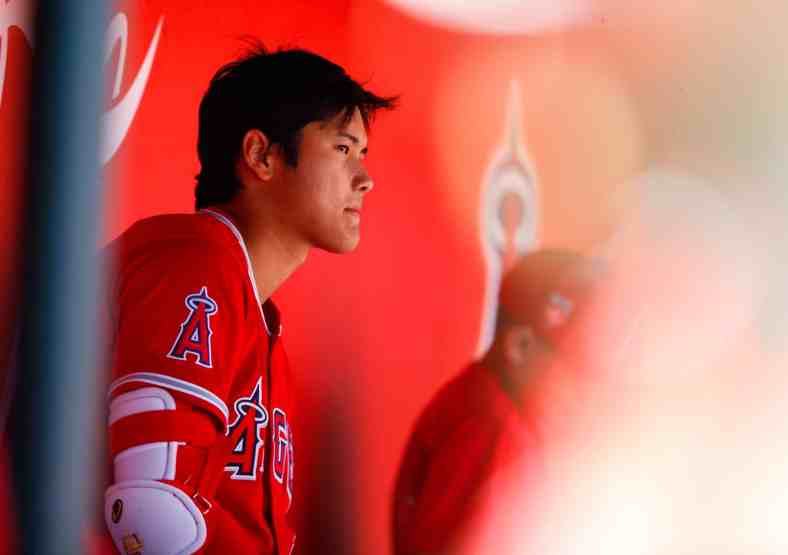
With Opening Day less than a week away, we can just about put a bow on 2018 spring training. The play in both the Cactus and Grapefruit Leagues gave us a lot to notice — in good and bad ways.
Some situations, like in the case of Domingo Santana, would not be so bad without a fairly large position battle going on. On the other hand, the inevitable arrival of a hotshot youngster makes the strong performances of players like Freddy Galvis even better.
In other cases, like what we’re seeing with Noah Syndergaard, it’s nice to see a player coming back well from an injury. Meanwhile, prospects looking to crack postseason teams — like Victor Robles, Derek Fisher, or Ryan McMahon — make this list, though not for the same reasons.
Plenty of winners and losers have emerged from 2018 spring training. These are some of the more notable among them.
Winner: Noah Syndergaard, starting pitcher, New York Mets
Syndergaard is hardly the only top pitcher having a great spring (Madison Bumgarner and Clayton Kershaw are just some of the other established pitchers who are thriving). Normally, we wouldn’t put much stock into what a pitcher of Thor’s caliber does in Spring Training. That said, we can make an exception for Syndergaard.
The reason is that he missed most of the 2017 season, making all of seven starts. So, we’re encouraged to see that Syndergaard has posted a 1.35 ERA, 1.05 WHIP, and 10.4 K/9 rate in Grapefruit League action. We’re quite bullish on the New York ace heading into 2018. His spring training performance has gone a long way towards justifying the optimism.
Loser: Domingo Santana, right fielder, Milwaukee Brewers
Much like we don’t want to overreact too much to an established veteran having a good spring, we don’t want to react too strongly to one having a bad spring. Domingo Santana is coming off of a season in which he slashed at .278/.371/.505 and hit 30 home runs. Guys like that aren’t normally competing for their jobs in the spring. But Milwaukee’s situation isn’t exactly normal.
In the offseason, the Brewers gave up Lewis Brinson — one of baseball’s best prospects — to acquire Christian Yelich from the Miami Marlins. They also gave Lorenzo Cain a big contract. Quite simply, those moves were not made so that Yelich and Cain would platoon. They will start in the Milwaukee outfield. That leaves one outfield spot and frankly, Ryan Braun’s contract and status with the franchise gives him the inside track entering spring training. Santana striking out in more than half of his Minor League at-bats is certainly not going to help him take that final spot from Braun.
Winner: Lucas Giolito, starting pitcher, Chicago White Sox
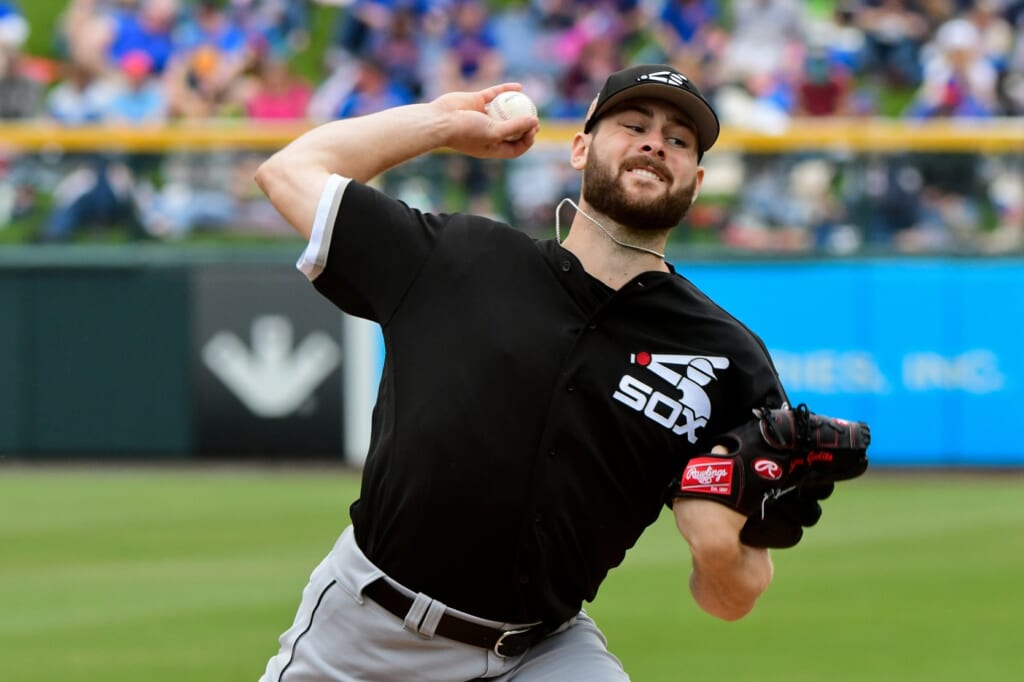
Giolito is one of the cornerstones of Chicago’s upcoming youth movement. The stuff is unquestionably there. Giolito’s issue has always been his control. When you can’t throw strikes and are putting hitters on for free, it doesn’t really matter how good your stuff is.
So, while we like Giolito’s spring ERA (2.04), WHIP (0.85), and strikeouts (17 Ks in 17.2 innings), we’re really drawn in by the fact that he’s only walked four guys. That’s a BB/9 rate of just over 2.0. That rate is than serviceable for any pitcher, let alone one who can strike out a hitter an inning. That’s something that should give the White Sox and their fans great optimism about Giolito’s future.
Loser: Austin Barnes, catcher, Los Angeles Dodgers
Barnes had a very nice year in 2017, which was his first taste of significant big league action. In 218 at-bats, he slashed at .289/.408/.486 and hit eight home runs. But when you’re a young player coming off of that kind of season, the last thing you want to do is give the impression that opposing pitchers have figured you out.
Barnes has struggled in Cactus league action, hitting .111/.273/.111. This is notable for two reasons. One is that spring training and especially the Cactus League tends to be hitter-friendly. So, struggling hitters are noticeable. The second reason is that Yasmani Grandal — who will be competing with Barnes for playing time in Los Angeles — is having a torrid spring. He’s hitting .333/.395/.769 with five home runs. So, from all angles, things aren’t exactly going well for Barnes in Arizona.
Winner: Ryan McMahon, first baseman, Colorado Rockies
McMahon has generally been something of an under-the-radar prospect in the Colorado organization. He’s consistently ranked as one of the organization’s top guys, but has also lagged behind star prospects like Brendan Rodgers. But while Rodgers is probably a year away from making an MLB impact, McMahon is ready to step into action right now. His success in spring training is telling us that.
McMahon, who is coming off of a big Minor League season, is now hitting .350/.391/.583 with two home runs. He’s absolutely grabbing Colorado’s first base battle by the throat, which is what rookies on good teams have to do. At this rate, McMahon will make the Rockies’ Opening Day roster and even should be in the starting lineup. His performance has just been that good.
Loser: Austin Hays, center fielder, Baltimore Orioles
Hays is one of Baltimore’s top prospects, and we’re likely going to see him at some point during the 2018 season. Unfortunately, his performance in the Grapefruit League hasn’t exactly done a lot to inspire confidence.
Hays has struggled. He’s hit .219/.257/.250 in Florida. What’s even more concerning is that Hays — who hit 32 home runs in the minors a season ago — has no home runs and only one extra-base hit. Don’t mistake one thing for another. A bad spring doesn’t mean that Hays is a bad player. But it does likely mean that we won’t see him in Baltimore until the second half of the season or even September.
Winner: Franklin Barreto, shortstop, Oakland Athletics
Marcus Semien will unquestionably be Oakland’s primary shortstop when the season gets going. But what’s also unquestionable is that Barreto is looming. If a strong Minor League season in 2017 (.290/.339/.456 15 homers, 15 steals) didn’t make that abundantly clear, then Barreto’s Cactus League performance is leaving no doubt.
Barreto is hitting .306/.352/.592 with three home runs and two steals in his first 17 games in Arizona. After the strong Minor League season in 2017, Barreto struggled in his brief MLB stint. That isn’t unique by any means. But Barreto has obviously made some adjustments in 2018. That’s exactly what teams want to see and when it happens, it’s a pretty safe bet that the player is not long for the minors.
Loser: Cesar Hernandez, second baseman, Philadelphia Phillies
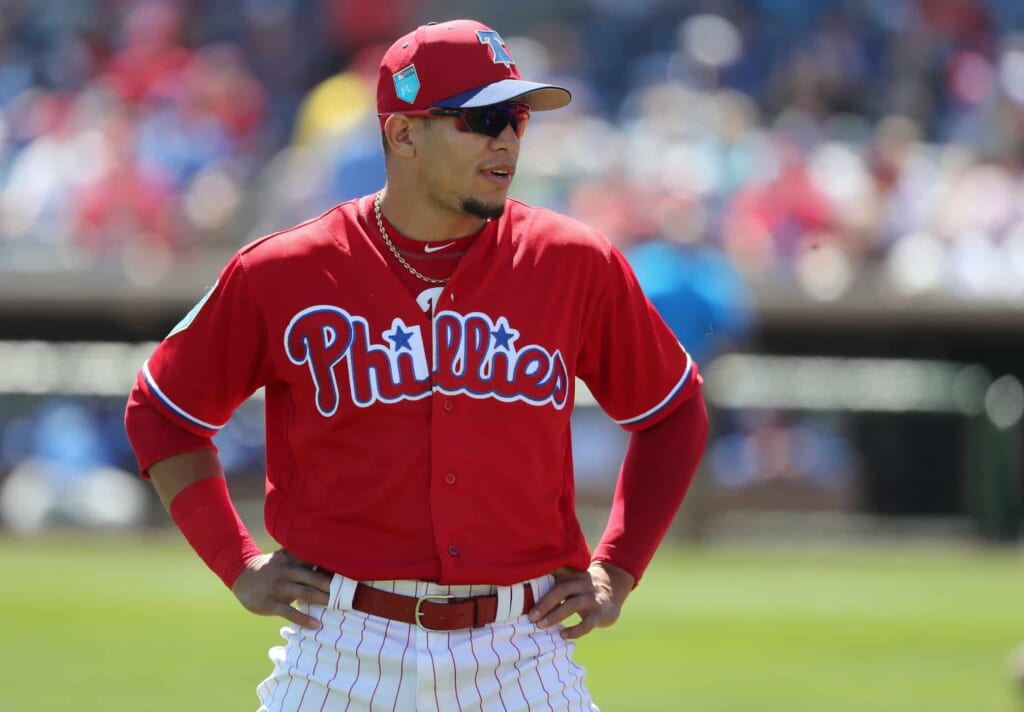
For some players, a bad spring training isn’t the end of the world. But when you’re holding a position pretty clearly being groomed for someone else, you want to show up strong in the spring. This is doubly true when the man of the future is also thriving.
That’s the scenario that Hernandez finds himself in. Scott Kingery, Philadelphia’s second baseman of the future, has raked in the Grapefruit League. He’s hit .390/.419/.732 with four home runs and four steals. Hernandez, meanwhile, hasn’t showed especially well. He does have a home run, but has struggled to a .191/.240/.298 line. Hernandez will start the season at the keystone. But if he doesn’t turn it around quickly, it won’t take long for Kingery to show up in Philadelphia and take Hernandez’s job.
Winner: Lewis Brinson, center fielder, Miami Marlins
The Marlins are going to lose and lose a lot in 2018. This is known. Heck, it’s even been acknowledged by Derek Jeter. A successful season in Miami will depend on the team’s young players making big steps in 2018. As the team’s top prospect, Brinson leads that bunch. He’s also off to a great start.
Brinson has hit .333/.365/.583 with two home runs. If Brinson can carry this kind of production into the season, it will go a long way towards providing a good outlook for the team, in general. Of course, a good spring does not mean a good regular season. Still, the Marlins front office has to like what its seen from its star return from the Yelich trade.
Loser: Billy Hamilton, center fielder, Cincinnati Reds
The book on Hamilton has always been fairly simple. He has game-changing speed that keeps pitchers and catchers up at night. The problem is that he doesn’t get on base enough for that his speed to be as impactful as it should be. That changed a little bit in 2016, when he posted a .321 OBP. But he regressed back down to .299 in 2017. Spring training of 2018 has been even worse.
Hamilton has struggled at the plate in the Cactus League. He’s slashed at .139/.279/.194. Perhaps more concerning is that he has nearly as many strikeouts (11) as he has hits and walks combined (12). That’s not a good omen for anyone. For someone who’s never even approached a double-digit home run season, it’s more troubling. We’d like to see Hamilton develop into more of a consistent on base guy to use his overwhelming speed. Unfortunately, that’s yet to happen in his MLB career. As such, we can’t exactly glaze over a poor spring from this particular veteran.
Winner: Blake Snell, starting pitcher, Tampa Bay Rays
We love that Snell has posted a 1.54 ERA and 0.86 WHIP in Grapefruit League action. But we also know that, with a limited number of innings pitched, allowing a three-run home run can greatly jack up both of those numbers. So, those numbers can go from good to bad with the snap of a finger. But the stat that we’re really impressed with is 19 strikeouts in 11.2 innings.
That points to a pitcher whose stuff is on point. Yes, 11.2 innings is a limited sample size. It would total about two regular season starts. But small sample size or not, pitchers are just not likely to record Ks a that rate if they’re not on point. This is especially nice to see since pitchers — even strikeout pitchers — don’t tend to be completely on point in spring. It’s all good news for the Rays, who are depending upon Snell to be a cornerstone arm in the starting rotation for a while.
Loser: Albert Almora Jr., center fielder, Chicago Cubs
What kind of player is Almora going to be for the Cubs? Is he going to be a nice fourth outfielder who comes off the bench at the end of games to replace Kyle Schwarber in the field? Or, is he going to be an everyday player? Based on the way that spring training has gone, Almora will end up in the first category.
Almora got off to a slow start in the spring and just hasn’t turned things around. While he does have a respectable two home runs, he’s struggled to a .182/.217/.386 line. Making matters worse is that Ian Happ, who is Almora’s primary competition for the centerfield job, has thrived. He’s hit .333/.417/.810 with five home runs. If Joe Maddon wants to navigate Chicago’s outfield by riding the hot hand, there’s no question that Almora will be the odd man out.
Winner: Jorge Soler/Whit Merrifield, right fielder/second baseman, Kansas City Royals
Soler’s average (.250) and OBP (.339) are decent, but far from overwhelming. More overwhelming are his .654 slugging percentage and six home runs. So, he’s making the most out of his hits. Soler has also recorded two steals. Merrifield, meanwhile, has four home runs and is slashing at .468/.469/.957 clip with three steals.
The harsh reality for the Royals is that 2018 should bring more losses than wins. Kansas City’s mid 2010s run brought two World Series appearances and a championship. That is much better than what most teams can claim, especially small market teams. But this is not the same team that we saw in 2014 and 2015. So, success will be measured based on what the team’s young players can do. Exhibits A and B in that are Soler and Merrifield. At least in spring, the Royals have to like what they’ve seen.
Loser: Mikie Mahtook, center fielder, Detroit Tigers
Mahtook has struggled mightily in camp. He’s hit .167/.239.238 and has struck out 12 times in 42 at-bats. To be fair, that rate may not seem too high, especially in this era. But even accounting for higher K rates, that is too many strikeouts for a guy who’s not likely to ever hit 20 home runs in a season.
Not unlike Kansas City, Detroit’s season will not be judged based on wins and losses. This is a team that could well lose 100 games. If the Tigers have a successful year, it will be because some players who might be a part of the team when its ready to compete again (presumably in 2-3 years) developed well. Mahtook, the 28-year-old center fielder coming off of a nice season, has potential to be one of those guys. But his spring training has left much to be desired.
Winner: Pablo Sandoval, third baseman, San Francisco Giants
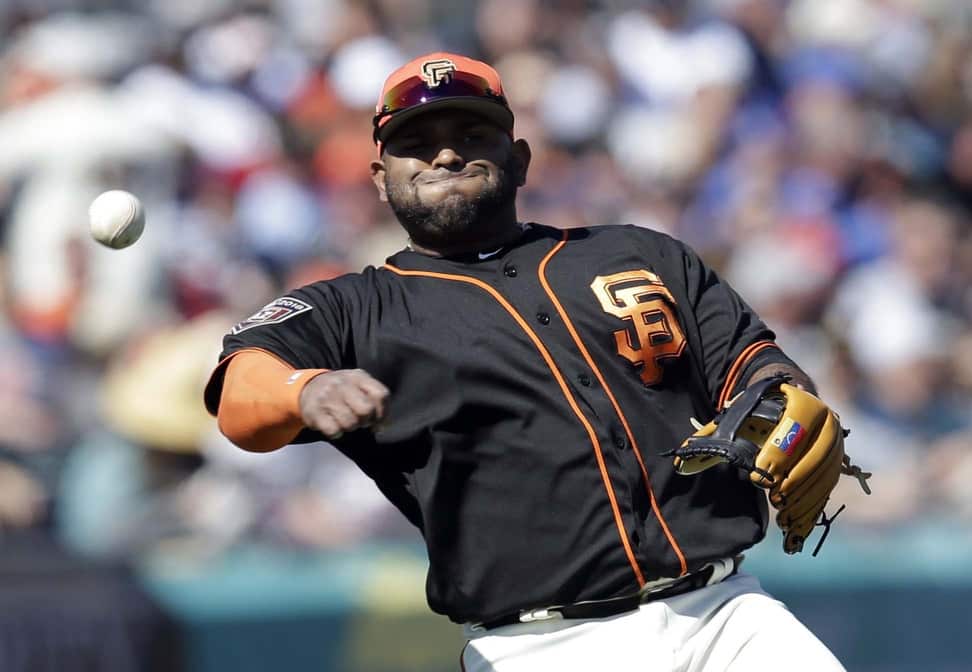
After an absolutely disastrous two-and-a-half years in Boston and a rather unimpressive (albeit brief) return to the Giants in 2017, it was fair to wonder if Sandoval’s career was over. San Francisco has been very loyal to the players that helped win World Series championships in 2010, 2012, and 2014. But how many other teams would have even invited Sandoval to camp?
Well, whatever the answer to that question is, Sandoval has made the most of his opportunity. He’s hit .326/.367/.535 with two home runs. The Panda has also only struck out eight times in 43 at-bats. He’s not going to start over Evan Longoria in San Francisco. But he’s earned himself a roster spot. Backing up both Longoria and the injury prone Brandon Belt at first base, Sandoval should see plenty of at-bats. A good spring has given Sandoval a chance to revitalize a career that appeared all but over less than a year ago.
Loser: Justin Smoak, first baseman, Toronto Blue Jays
Smoak’s starting job in Toronto is not on the line. When you hit 38 home runs one season, your job is safe to start the next year. With that noted, his spring training performance (.212/.278/.364, one home run) has been dismal.
Smoak isn’t like the average player coming off of a stellar season, either. His 2017 slash line (.270/.355/.529) dwarfed his career marks entering the year (.223/.308/.392). Additionally, the 38 home runs nearly doubled his previous career high. So, while Smoak isn’t competing for his job, a validation season would go a long way in showing that he’s really turned a corner and not just some platoon player who had one great year. A bad spring doesn’t mean that he hasn’t turned a corner. But it’s not the start we wanted to see.
Winner: Yonder Alonso, first baseman, Cleveland Indians
Much like Smoak, Alonso had a career year in 2017. He hit 28 home runs, which equaled his previous four best seasons combined. But while Smoak has struggled in Florida, Alonso has thrived in Arizona.
Maybe its the dry, desert air. Maybe it’s the fact that, for the first time in his career (excluding a cameo appearance in 2010), Alonso is playing for a contending team. Whatever the reasons, he’s tearing the cover off of the ball. Alonso is hitting .378/.462/.867 with six home runs. If that production (or anything close to it) carries over into the regular season, Cleveland’s lineup is going to be scarier than we thought. That says something.
Loser: Derek Fisher, left fielder, Houston Astros
It’s going to be tough to crack Houston’s lineup. It’ll be even harder to stay in the lineup once the injured Yuli Gurriel returns. Fisher, one of the top prospects in the Astros’ organization, hasn’t exactly thrived during his spring training audition.
On the plus side, Fisher has a decent .333 OBP. The problem is that the OBP looks especially good next to a .179 average. Yes, it’s nice to see a hitter draw walks. But pitchers frequently struggle with control in spring training. It’s not necessarily something all that likely to transfer into the regular season. What’s even more notable is that Fisher — who hit 21 home runs and slugged at .583 in Triple-A in 2017 — has only one home run and is slugging at .333. Cracking this lineup is going to be a challenge. It’s an even greater challenge with spring numbers like that.
Winner: Freddy Galvis, shortstop, San Diego Padres
Galvis is not the shortstop of the future in San Diego. That’s Fernando Tatis Jr., who we should see with the big club sometime in early 2019. But at 28, Galvis has a future in MLB. He’s a nice utility player who can play shortstop. So Galvis will be somewhere in 2019. But in order to catch on as some team’s starting shortstop in 2019, it’s important for Galvis to have a good 2018. He’s off to a positive start.
Galvis has hit .295/.347/.500, has two home runs, five extra-base hits, and only nine strikeouts. Whether that will translate into the regular season remains to be seen. But teams around the league are certainly taking notice of Galvis’ hot spring.
Loser: Rougned Odor, second baseman, Texas Rangers
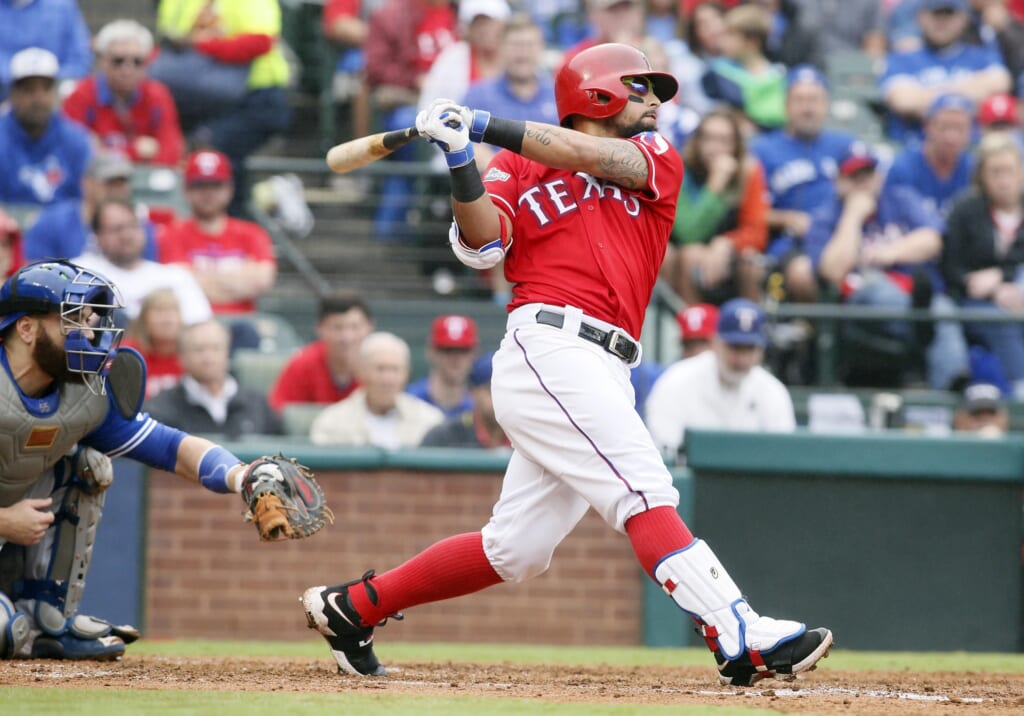
Odor isn’t quite a “If he succeeds, they succeed. If he fails, they fail” type of player for the Rangers. He’s not that much of a bellwether player. But if Odor plays well, it gets much easier to imagine this team competing for a playoff spot. Keeping that in mind, it’s hard to see anyone in Texas being too enthused by his spring.
A .167 average and .245 OBP are bad. But Odor’s offensive game depends largely on his power. He’s hit 30 or more home runs in each of his last two seasons. So, while we don’t like the average and OBP, his .229 slugging percentage and zero home runs are more troubling. Those numbers are going to have to get turned around in a big way when the games start to count.
Winner: Dan Vogelbach, first baseman, Seattle Mariners
With a lineup that includes guys like Robinson Cano, Nelson Cruz, Corey Seager, and Dee Gordon, the Mariners can hit. The lineup will get even more dangerous if people like Vogelbach can have big years. So, his spring training performance is something that Seattle should be quite encouraged by.
Vogelbach, who is competing for the first base job, is making it awfully hard on the Mariners to bench him. He’s hit five home runs and is slashing at .391/.509/.848. Yes, numbers in spring training have to be taken with a grain of salt because of the small sample size. Still, getting on base over half the time is quite impressive for anyone who’s logged more than about 10 at-bats (Vogelbach has 46). This isn’t simply someone getting hot for 2-3 games. Vogelbach has smoked the ball all spring.
Loser: Alex Avila, catcher, Arizona Diamondbacks
The small sample size argument holds true with struggling players as well as thriving ones. But much like it’s hard to ignore a red hot player after about 2-3 games, ignoring a struggling one is easier said than done. Avila, who is hitting .083/.185/.250, is certainly struggling.
With Chris Iannetta gone, Avila was brought in to help stabilize Arizona’s situation behind the plate. This is a guy who hit .264/.387.447 with 14 home runs a season ago. So, expectations were justifiably high. In the spring, he just has not delivered. That doesn’t mean that he can’t or won’t have a good year. But Avila has certainly stumbled out of the gate in a big way this spring.
Winner: Jose Berrios, starting pitcher, Minnesota Twins
Berrios had a nice season for the Twins in 2017, posting a 3.89 ERA, 1.23 WHIP, and a 14-8 record. That was a bounce-back season in a big way. In 2016, Berrios struggled to a 8.02 ERA and 1.87 WHIP. So, while it would be melodramatic to call 2018 a make or break, it will go a long way in telling us what kind of pitcher we can expect Berrios to be. And with that in mind, we’re really encouraged by his spring training performance.
Berrios has posted a 1.69 ERA and 1.19 WHIP. He’s also demonstrated good control, with a 2.8 BB/9 ratio. When Berrios has struggled in his career, high walk rates have usually been a culprit. So, we’re liking that he’s throwing the ball over the plate. He’s also only struck out 13 hitters in those 16 innings. While that’s not a bad rate, it’s not overwhelming, either. The fact that hitters are not reaching base in a big way indicates that hitters are not making loud contact. It’s all good news for Berrios and his team.
Loser: Victor Robles, center fielder, Washington Nationals
To call 2018 season a make or break season for Berrios’ career would be a bit extreme. But to say that the only way the Nationals can have a successful year in 2018 is to win a World Series would not be. It’s the product of making the playoffs four times in six years, never getting beyond the first round, and having several of the team’s top players (including the best) as pending free agents. So, in order to crack this lineup, you have to excel.
Robles has not done that in the Grapefruit League. Washington’s top prospect has slumped to a .188/.216 .313 line with 12 strikeout in 48 at-bats. As has been the case with other players, the strikeout total isn’t terrible on its own. But it is high for a guy who’s never hit more than 10 home runs in a single Minor League season. Robles is already assured of not making the Nationals’ Opening Day roster. If he’s going to make it to Washington in the early portion of the season, a big turnaround is necessary.
Winner: Jack Flaherty, starting pitcher, St. Louis Cardinals
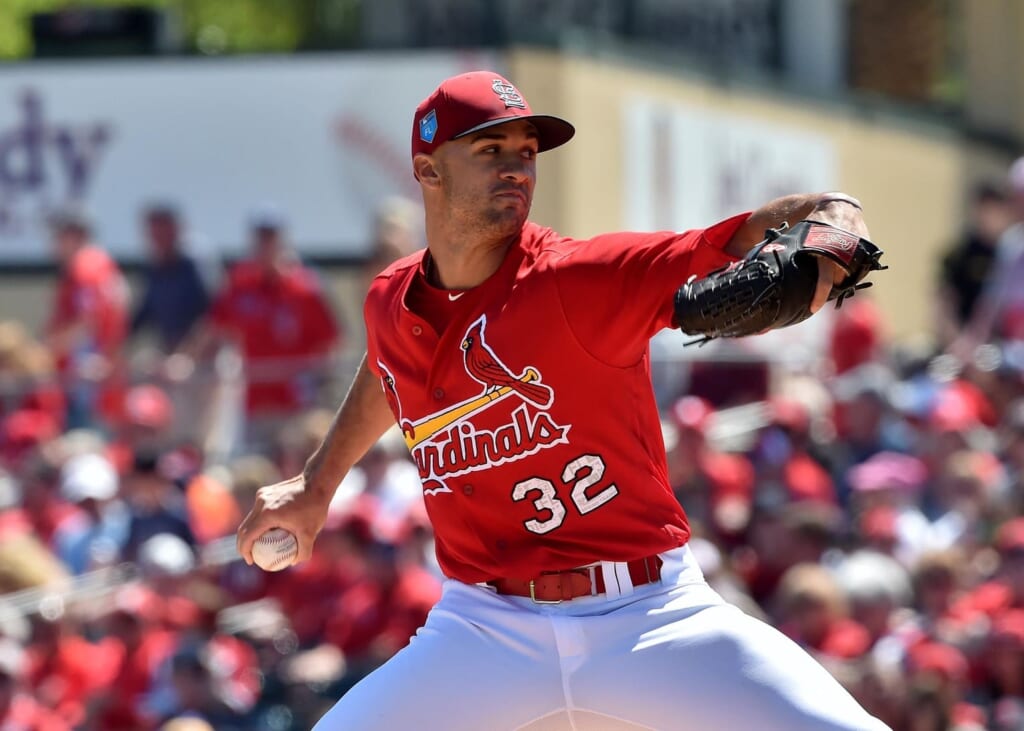
One of the top prospects in the St. Louis organization, Flaherty will be with the Cardinals at some point of the 2018 season. This is especially true if he continues to pitch as well as he has in Cactus League action.
Now, the 4.85 ERA may not look too good. But while we concede that it’s nothing to write home about, it also doesn’t take much to inflate a pitcher’s ERA in spring training. A 1.08 WHIP, however, is fairly indicative of a pitcher who’s consistently keeping hitters off base. What we like even more is 20 strikeouts in 13 innings. That’s a 13.8 K/9 rate, which will work for a pitcher in any role. Flaherty won’t be with St. Louis on Opening Day. But it shouldn’t be a terribly long wait.
Loser: Tyler Glasnow, starting pitcher, Pittsburgh Pirates
Like the aforementioned rebuilding teams, Pittsburgh’s season will be judged more on the progress of the young players than on wins and losses. Glasnow is front and center on that list of young players. While pitching coach Ray Searage may like the progress that Glasnow has made, it’s not showing up in his spring training numbers.
On the plus side, Glasnow does have a nice K/9 rate (13.9). But he’s also walking too many hitters (3.6 per nine) and allowing too many hits (12.4 per nine). That’s led to an 8.03 ERA and 1.78 WHIP, both of which are a little too high to chalk up to a small sample size. The good news for Glasnow is that because the Pirates have tempered expectations, Glasnow struggling in the early season (assuming it happens) wont be the end of the world. But he does have a long way to go.
Winner: Joe Kelly, relief pitcher, Boston Red Sox
Ignore the 5.68 ERA. Everything that we’ve noted about small sample sizes with pitchers is even more notable with relievers. And unlike the aforementioned Glasnow, Kelly’s peripherals indicate that his spring training is going quite well.
He’s walking fewer than three hitters per nine innings. In general, Kelly is allowing fewer than one base runner per inning. He’s also striking out 15.6 hitters per nine. Even for a reliever, that’s a staggering rate. Kelly was once a highly touted starter who things didn’t quite work out for. In 2017, he a good step forward as a failed starter turned reliever (like Wade Davis or Andrew Miller). As we head into 2018, Kelly is showing himself to be even more suited for the bullpen role.
Loser: Greg Bird, first baseman, New York Yankees
In 2017, Bird had a monster spring and followed it up with a poor regular season. Both Bird and the Yankees have to be hoping that the reverse happens in 2018. Because if Bird’s 2018 spring training carries into the regular season, he will find himself on the bench and fast.
Bird is a power hitter. So, while we’re bothered by his .167 average and .286 OBP, we’d be okay if he was driving the ball. But that’s not coming close to happening. Bird has one home run and only one other extra-base hit, hence the .250 slugging percentage. Make no mistake, New York has plenty of power in the rest of its lineup. But Bird’s power can give this lineup even greater depth than it already has. And given that the Yankees are very much competing for a championship in 2018, we’re not thinking that they’ll be too patient with Bird if his struggles carry beyond March 29.
Winner: Ronald Acuna, outfielder, Atlanta Braves
Acuna will start the season in the minors, but that’s really just the business of baseball for you. It certainly has nothing to do with what he’s done in spring training. In fact, if spring training performance was the only judge, Acuna would be in Atlanta’s Opening Day lineup and batting in one of the first 4-5 spots.
He’s hitting .432/.519/.727 with four home runs and four steals in Grapefruit League action. Acuna is also capable of playing all three outfield positions. That should come in handy in a Braves outfield that isn’t exactly loaded with All-Stars. It will not be long before Acuna is up and playing with the big club. Once that happens, enjoy the show.
Loser: Shohei Ohtani, starting pitcher, Los Angeles Angels
As the Japanese Babe Ruth, Ohtani can both hit and pitch. But in the Cactus League, he’s struggled. And we’re not talking about minor struggles here. At the plate, he’s hit .107/.219/.107 with nine strikeouts and only three singles in 28 at-bats. But Ohtani figures to be a pitcher who can hit, not the other way around. It’s his pitching that the Halos will really rely on in 2018. If spring training is any indicator, there’s a lot of work to be done.
Ohtani has only thrown only 2.2 innings. But this isn’t really a matter of a small simple size leading to some bad numbers. No, this is more about bad numbers leading to a small sample size. In those 2.2 innings, he allowed nine hits, two walks, and eight earned. This wasn’t a matter of some poorly hit balls finding holes, either. Three of those nine hits were home runs. Ohtani remains on track to make the Opening Day roster. But he’s also showing himself to be a work in progress.